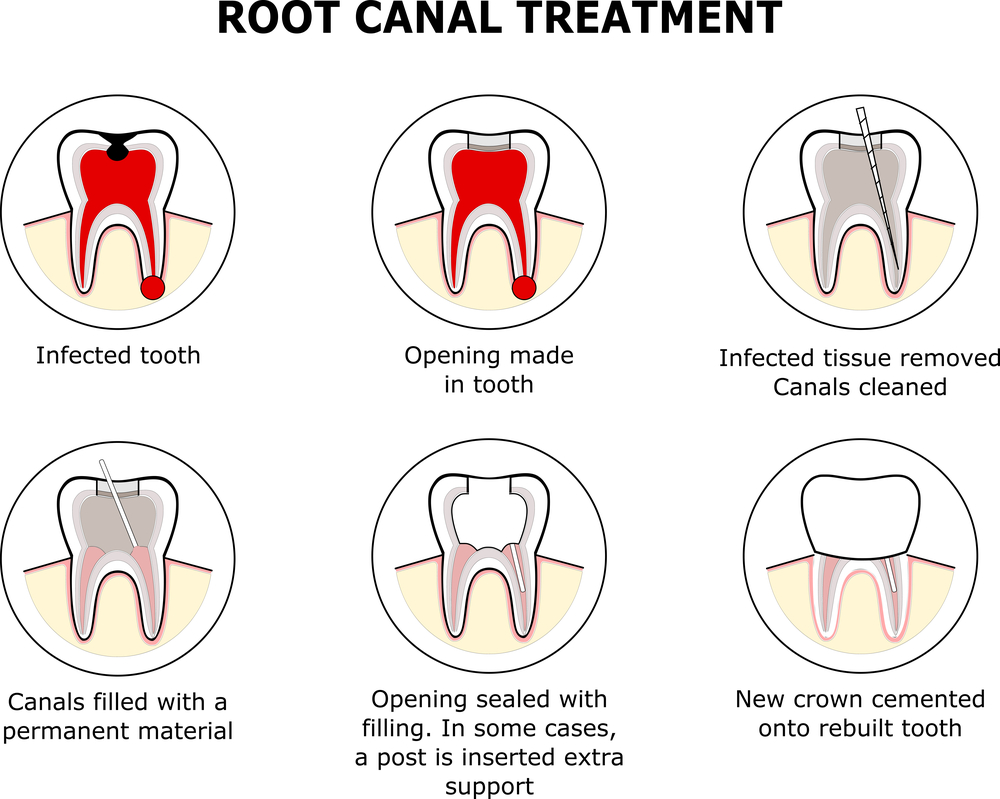To understand root canal treatment, we shall first discuss the anatomy of the tooth. The tooth crown is the part of the tooth that is visible in the mouth and the tooth root is not visible and is covered by bone and gum. The dental pulp is the center of the tooth that extends into the roots of the tooth containing nerve and blood vessels to provide the tooth blood and nutrients.
The dental pulp tissue can become inflamed and infected due to deep tooth decay or a large filling that extend into the pulp, trauma to the tooth, or extensive gum disease. Unlike the rest of the body, the pulp is enclosed within the tooth and is unable to repair itself when it is irreversibly inflamed, hence treatment will be required.
Signs and symptoms of pulp involvement may include pain, sensitivity to hot and cold, pain during biting and chewing, discoloration of the tooth, swelling or abscess and tenderness of overlying gums.

